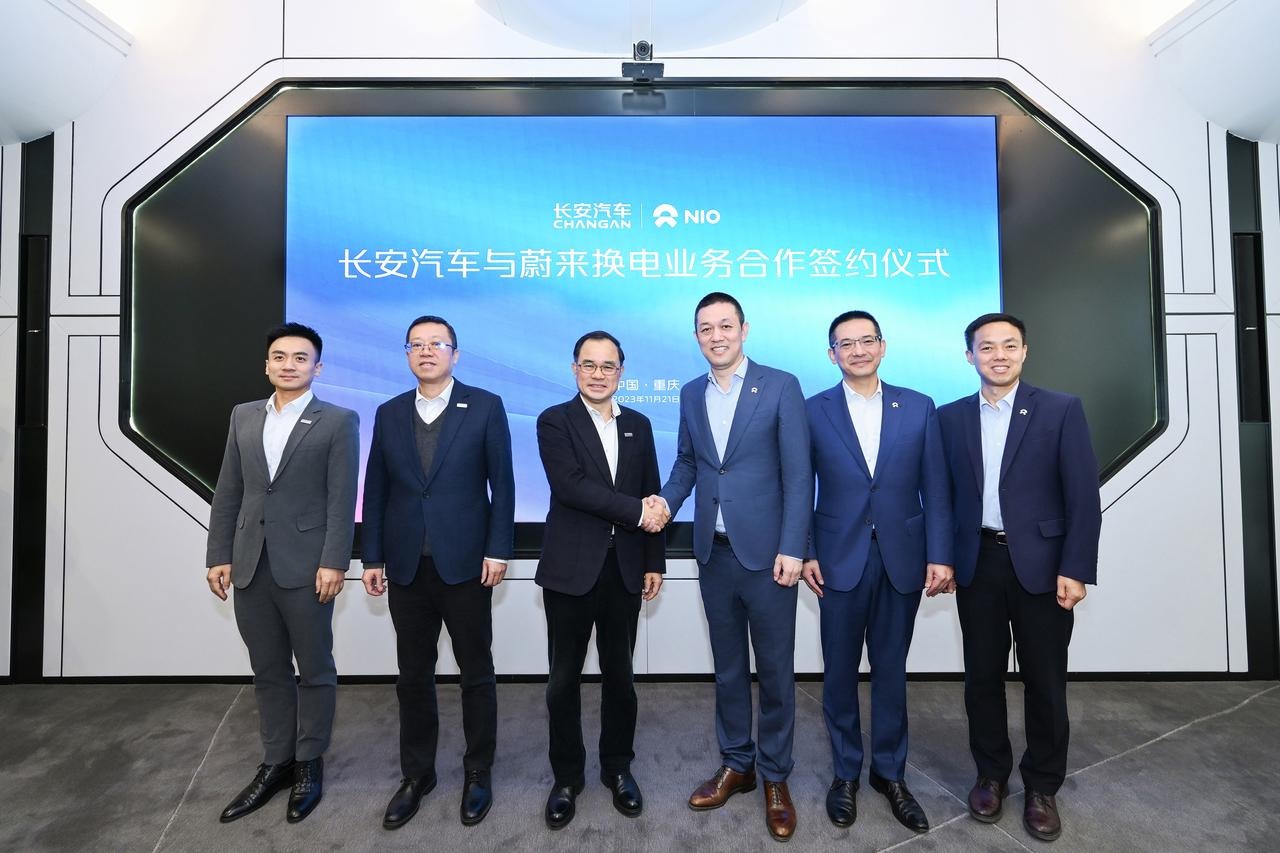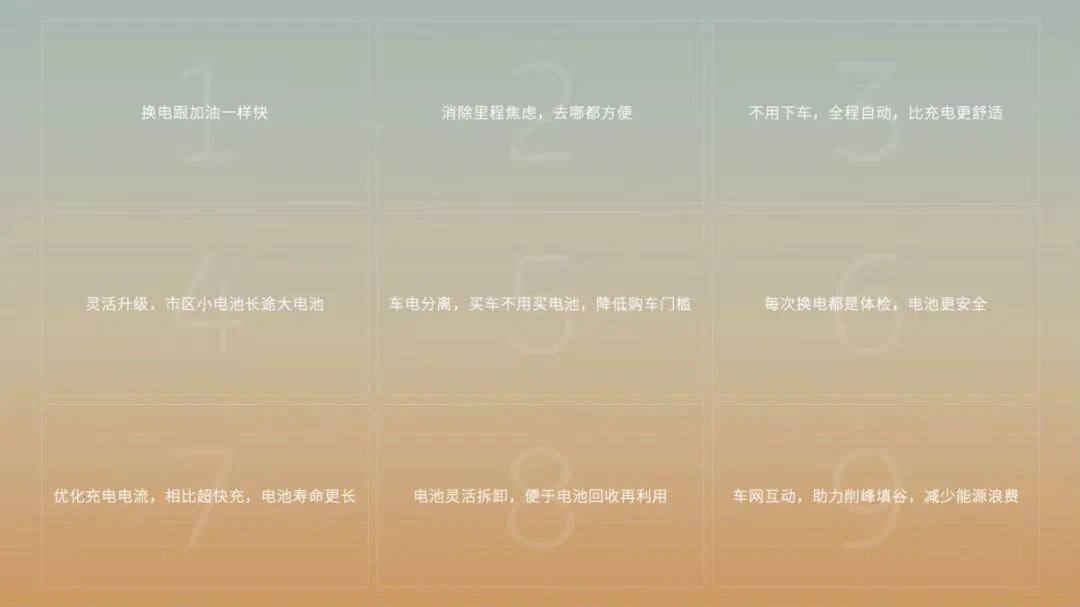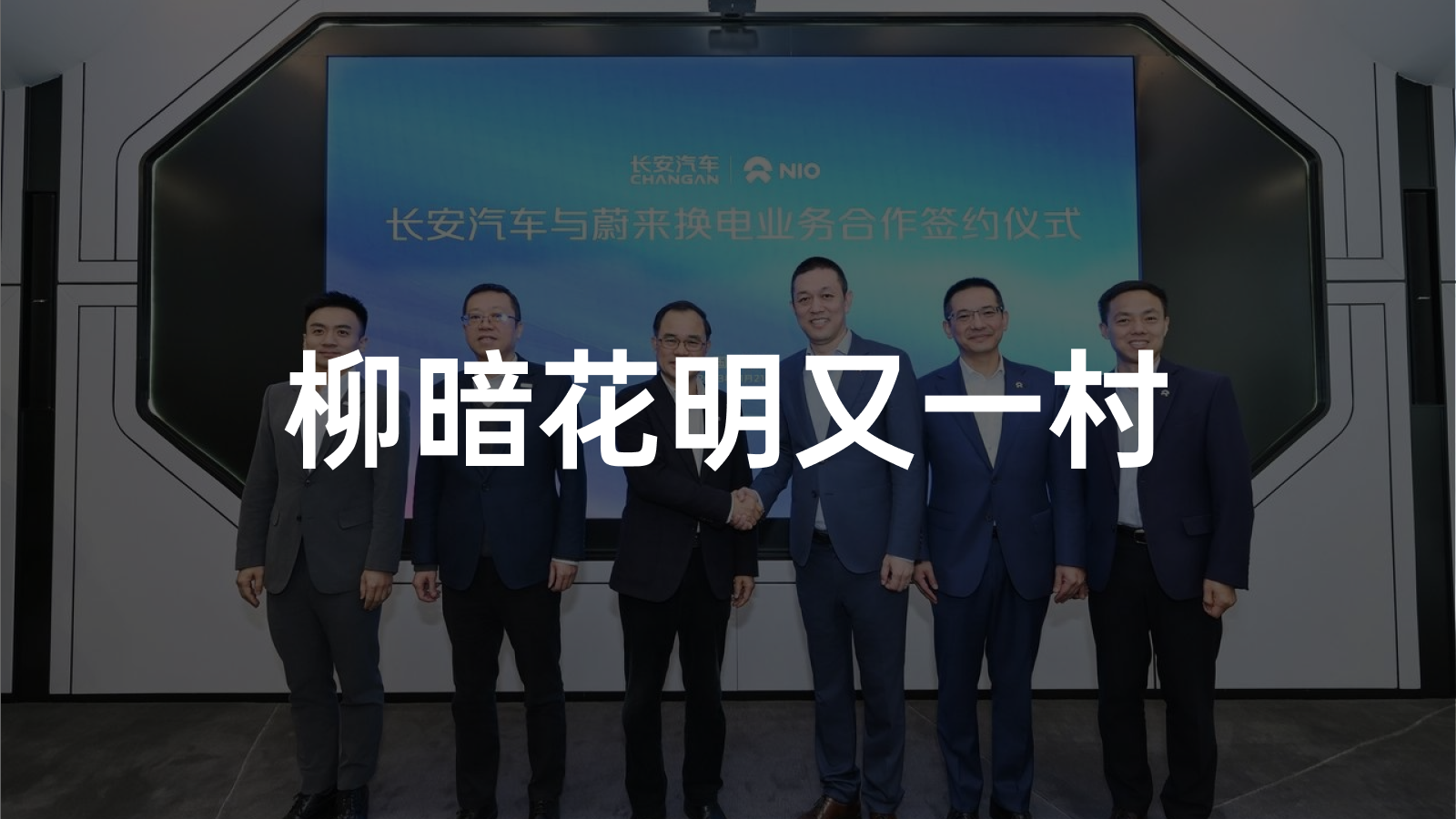The relationship between NIO and the ICU has always been complicated, yet NIO always has a knack for turning adversity into fortune.
On November 21, NIO announced a battery swap cooperation agreement with CCAG.
For CCAG, entering into NIO’s battery swap system and improving the energy efficiency of its models is an embellishment to its already abundant resources.
However, for NIO, welcoming CCAG into its battery swap system is not merely a significant return gained from the long-term value of battery swap layouts. This is also a revitalization of the enterprise’s overall vitality.
Meanwhile, in terms of battery swap itself, it’s a milestone victory.
More Than Just Battery Swap Cooperation
Centered around battery swapping, CCAG and NIO have reached a very extensive cooperation agreement.
It is reported that the cooperation between CCAG and NIO will mainly focus on the following four aspects:
- Construction and sharing of battery swap network;
- Research and development of battery swap models;
- Promotion of battery swap standards;
- Establish an efficient battery asset management system.

From the perspective of the content of the cooperation, it not only stacks the optimal resources between CCAG and NIO, but also covers the pursuit of industry and social value.
CCAG Chairman Zhu Huarong attaches great importance to this cooperation with NIO, stating that it’s significant, and he hopes that CCAG will cooperate more with NIO in other platform-based and foundational fields. This includes areas such as energy, battery charging and swapping, vehicle integration, and ecosystem.
Clearly, using battery swap as a link, CCAG is looking for new transformation dynamics by leveraging NIO.
In the crucial moment for the entire auto market’s transition towards new energy, CCAG always worries about lagging behind. Currently, in the new energy automotive market, it has reached strategic partnerships with major industry giants like Huawei, CATL, and has launched the avatr, DEEPAL, and CHN brands, embarking on the dual fronts of BEVs and PHEVs.
However, these transformation strategies mostly focus on the product side. In terms of energy replenishment system, CCAG has a shortfall, while battery swapping is precisely NIO’s forte.
According to the latest official data, NIO currently possesses over 2,100 battery swapping stations and more than 20,000 charging piles. The scale of such energy supplement infrastructure is rare in the new energy industry, especially the battery swapping stations.
For CCAG, NIO is the evident choice for strengthening its energy supplement system.
Commenting on the cooperation between CCAG and NIO, Li Bin stated:
This cooperation is NIO’s first with an auto company in terms of battery swap services, and is highly significant for both NIO and the smart electric vehicle industry. I believe that through this cooperation, NIO and CCAG will jointly advance the high-quality development of the new energy vehicle industry and promote the low-carbon transformation of the auto industry.### NIO’s Future Gets a Refill
Why did CCAG and NIO choose to focus on battery swapping in their collaboration? The answer is simple: battery swapping has high applicability.
At this year’s NIO Power Day, NIO officially summarized the nine advantages of battery swapping:
- Battery swapping is as fast as refueling, taking about three minutes;
- It eliminates range anxiety, making travel more convenient;
- Allows for passenger sleep, full automation, it is more comfortable than charging;
- Flexible upgrade, smaller battery for city use, larger battery for long distances;
- Separates the vehicle from the battery, you buy the car without buying the battery, lowering the threshold for vehicle purchase;
- Each battery swap is a checkup, making batteries safer;
- Optimizes charging current, leading to longer battery lifespan compared to fast charging;
- Batteries are easy to disassemble, facilitating battery recycling and reuse;
- Car network interaction, assists in peak load shifting, reducing energy waste.

These nine valuable points have both user value and social value. However, implementing such a project is indeed challenging for a private company like NIO.
Since the inception of its battery swap business model, NIO has faced skepticism. The high costs of building swap stations, slow layout, and long effects are dragging down NIO’s financial performance. NIO inevitably faces doubt.
What’s more, according to a PhoenixNet report, NIO employees questioned the sustainability of the battery swap business before the official announcement. However, Li Bin stated that battery swapping is a considerable first-mover advantage for NIO.
Despite internal and external skepticism towards battery swapping, Li Bin has never let up on pushing this business model.
Since the establishment of the first swap station in Shenzhen Nanshan Technology Park on May 20, 2018, the construction of NIO’s battery swap stations has been accelerating.
Official data shows that it took NIO 1,508 days to build the first 1,000 stations, and only 447 days to build the next 1,000.
Nowadays, the number of NIO’s swap stations has exceeded 2,100, with 646 on highways, covering 6 vertical and 4 horizontal routes of major city clusters.
According to the most recent official data, NIO users have swapped batteries more than 32 million times collectively, with a daily average of 60,000 times.
Moving forward, with the advancements in swap station construction technology, the enrichment of construction experience, and the addition of CCAG, the pace of NIO’s swap station expansion is expected to further accelerate, and its usage rate will also improve significantly.Clearly, whether in terms of the number of battery swap stations or the utilization rate of battery swapping, NIO’s battery swap service has already reached a certain level of maturity, with its value rising steadily. The current state is as described by Li Bin:
It’s time to open it up to the entire industry.
It is worth mentioning that national policies are also promoting the development of battery swapping services.
From 2020, numerous documents such as the “New Energy Vehicle Industry Development Plan (2021-2035)”, “Opinions on Further Improving the Service Guarantee Capability of Charging and Battery Swapping Infrastructure”, and “Notice on Launching a Pilot Program on the Application of Battery Swapping in New Energy Vehicles” were issued in succession, promoting the development of battery swapping from a macro perspective.
In fact, Li Bin stated that the cooperation between CCAG and NIO is a concrete implementation of these documents, and that more auto manufacturers will join the battery swapping cooperation.
With the expansion of battery swap stations and the battery swapping community, NIO’s battery swapping “iPhone moment” may not be far off.
In Conclusion
In a time when the new energy vehicle industry is generally trying to reduce costs and increase efficiency, NIO’s substantial investment in the development of battery swap stations certainly goes against the trend.
However, from NIO’s perspective, this is actually a response to national policies and a pursuit of long-term value.
Meanwhile, on the path of battery swapping, NIO essentially has no way back.
As NIO’s battery swap stations scale up, battery swapping becomes increasingly ingrained in people’s minds, and both user value and social value grow, it has become nearly impossible for NIO to abandon the battery swapping service to face market competition in a leaner fashion.
Especially for NIO users or potential NIO users, battery swapping has become a part of NIO’s product strength.
Despite having no way back, NIO has essentially planned an escape from the very beginning, as Li Bin stated:
NIO was prepared to open its charging and battery swapping services to the entire industry from day one.
Reality has proven that the development of battery swapping has indeed justified NIO’s preparation. The participation of CCAG and an ever increasing number of automakers are telling NIO that, despite the bumpy road of battery swapping, the road is indeed there.
Of course, with the expansion of NIO’s battery swapping community, a new question has emerged – battery swapping was originally an exclusive experience for NIO owners. Now with the inclusion of other car brands, how should NIO balance the experience between NIO owners and other brand owners?
This article is a translation by AI of a Chinese report from 42HOW. If you have any questions about it, please email bd@42how.com.
